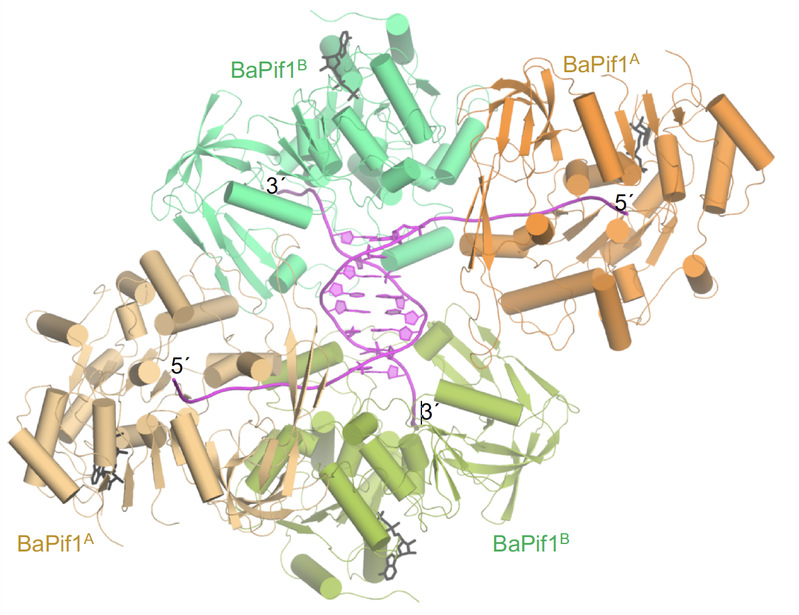Pif1 is the member of superfamily 1B(SF1B) helicase, evolutionarily conserved from prokaryote to eukaryote. Pif1 can unwind dsDNA,DNA/RNA hybrid and G-quadruplex DNA with 5’-3’ polarity by using the energy provided by ATP hydrolysis. Pif1 plays multiple roles in maintaining genome stability and preferentially unwinds forked dsDNA, but the mechanism by which Pif1 unwinds forked dsDNA remains elusive. Haiwei Song’s lab took BaPif1 as the research object, solved the crystal structure of BaPif1 and symmetrical double forked dsDNA complex using structural biology method. Two interacting BaPif1 molecules are bound to each fork of the partially unwound dsDNA, and interact with the 5′ arm and 3′ ss/dsDNA respectively. The structure revealed several important features that distinguish BaPif1 from any other known SF1 and SF2 helicases. First, the BaPif1 molecule bound to the 5′ arm initiates the forked DNA unwinding by breaking the first base-pair through geometrical strain while the BaPif1 molecule bound to the 3′ arm plays an accessory role in unwinding through stabilizing the first broken base-pair and engaging the second base-pair in a pre-breaking state. Second, the BaPif1 molecule bound to the 3′ arm is positioned to prevent re-winding of the displaced strand with the tracking strand. Third, the two BaPif1 molecules contact each other through electrostatic interactions, and the nature of such interactions may allow two BaPif1 molecules regulate their unwinding activities. These observations together with kinetics and smFRET data enabled us to propose a mechanism by which BaPif1 unwinds a forked dsDNA. These results not only explain the previous biochemical observations but also provided a framework for further elucidating the mechanism by which Pif1 helicases unwind DNA/RNA hybrids and G4 DNAs.
Nannan Su and Dr. Alicia from University of Arkansas are the first authors, and Professor Haiwei Song is the corresponding author of this paper.

Text link: https://www.nature.com/articles/s41467-019-13414-9



